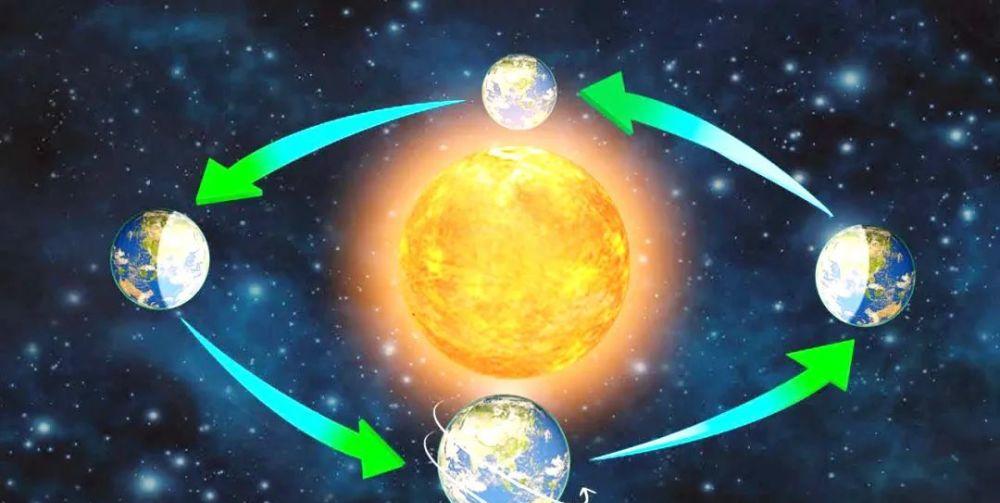In the dark outer space, the earth is like a lonely boat, flying fast all the time, in addition to constantly doing rotational movements, it is also rotating around the sun in a circular orbit, and the average rotation speed reaches 29.783 kilometers per second, which is simply incredible.
Rather than saying that the Earth's orbit is circular, it is better to say that the orbit is actually a near-circular elliptical, and under the influence of various complex forces, there are perihelion and aphelion points in the Earth's orbit.

Perihelion is the earth's closest position point to the sun, the distance is 147.1 million kilometers, the far point is the farthest point of the earth from the sun, the distance is 152 million kilometers, and at 13:52 on January 4, 2022, the earth will arrive at the perihelion on time, which is a full 5 million kilometers shorter than the apogee.
The Earth's orbital period is exactly one year, so the Earth reaches perihelion and aphelion once a year, at the beginning of January and the beginning of July, respectively.
It's late December 2021, and 2022 is just around the corner, so the Earth is about to reach perihelion, when the Straight Line Distance between the Earth and the Sun is only 147.1 million kilometers. Since the distance between the earth and the sun has been shortened, the earth's illumination will naturally increase, what impact does this have on us, does it mean that this winter is a warm winter?
Astronomical knowledge tells us that there is an angle of 23 ° 26 ′ between the earth's rotation and rotation, and it is precisely because of the angle that the earth's surface changes every year in the spring, summer, autumn and winter seasons, which is because the angle of sunlight hitting the earth's ground has been changing.
From July to September every year, the direct angle of sunlight is in the northern hemisphere, so the northern hemisphere region ushers in a hot summer, the southern hemisphere region ushers in a cold winter, and every december to February, the direct angle of sunlight moves to the southern hemisphere, the southern hemisphere ushers in summer, and the northern hemisphere ushers in winter.
Therefore, the earth's four seasons change is only related to the angle of sunlight, and perihelion and aphelion have little to do with it, the earth comes to perihelion, does not mean that this winter is a warm winter, but it will indeed affect us.
The length of the Earth's surface season will be affected, because when the Earth approaches perihelion along its orbit, it is also the time when the Earth's rotation speed is the fastest, although the average orbital speed is 29.783 km per second, at perhelion the orbital speed exceeds 30.3 km per second, which is 1 km per second faster than at the aphelion.
The rapid rotation of the Earth means that the Northern Hemisphere winter and the Southern Hemisphere summer are the shortest seasons of the year, in other words, the Northern Hemisphere winter is 5 days shorter than the summer, and the Southern Hemisphere winter is 5 days longer than the summer.
Kepler's second law states that the connection between the sun and the planets in motion in the solar system sweeps through an equal area in equal time, that is, the area swept by the Earth for 1 hour near the perihelion is equivalent to the area swept by the Earth in the aphelion for one hour.
This means that the Earth's speed becomes faster at perihelion and slower at the far sun, in fact, all planets are like this, the closer to the sun, the faster the rotation speed, the farther away from the Earth, the slower the rotation speed.
Mercury orbits at 47.87 km/s, Venus at 35 km/s, Earth at 29.783 km/s, Mars at 24.13 km/s, Jupiter at 13.07 km/s, Saturn at 9.69 km/s, Uranus at 6.81 km/s, and Neptune at 5.43 km/s. In addition, Pluto, which is no longer part of the eight planets, has a rotation speed of 4.743 kilometers per second.
Now, the Earth is about to reach perihelion, and the Earth's rotation speed has accelerated, beginning to approach 30.3 kilometers per second, which has caused the Northern Hemisphere to become shorter every winter, and this is the impact on us. Interesting and informative scientific content, please pay attention to the only WeChat public account: Interesting Exploration